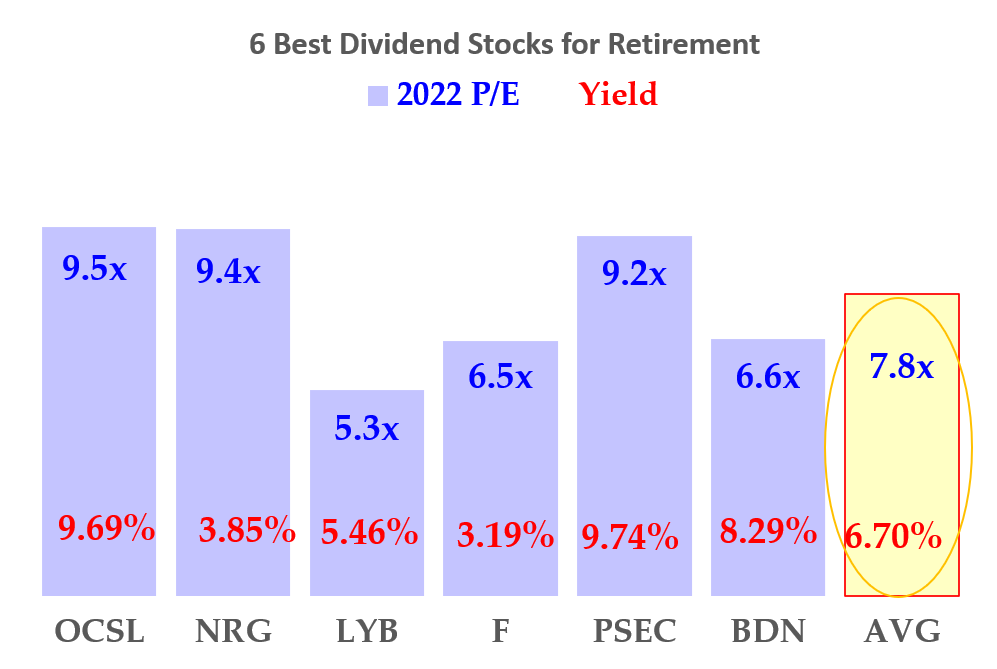
A classic method for portfolio diversification is the stock-bond rate. A good rule is to maintain a stock ratio equal to 100 minus the bond's age. In a down market, bonds that are older are more likely to be affected than those that were younger.
Divide a portfolio into stocks and bonds
Divide a portfolio into stocks and bonds age depends on the amount of risk an investor is comfortable taking. You might want to allocate 50-50 stocks and bonds to a portfolio if you are over fifty. If you're over 100, you might reduce the number of stocks in you portfolio. It's important to remember, however, that retirement does not mean the end of your working life. You may live for many years or even decades. You need to think about your risk tolerance as well as the time it will take to invest.
The best asset allocation will depend on your age, how long you have before retiring, and your risk tolerance. But regardless of age, diversifying your investments across asset classes should give you a sense of security.
Divide a portfolio into high-quality bonds
Two main approaches can be used to divide a portfolio between high-quality stocks and bonds. A conservative approach means that you allocate approximately 60% of your portfolio for stocks and 40% for bonds. A more aggressive approach is to adjust the percentages according to your age. If you're 25 years old with a few decades before retirement, your allocation should consist of 5% bonds and 95% stock. As you get older, your allocation can be increased to 20% stocks, and 60% bonds.

You should have a middle fund that has funding for at least two to seven years. In this bucket, you should only invest in investment-grade bonds, intermediate-term bonds, preferred stock, and investment-grade REITs.
Rule of 120
The "rule of 120" is a simple asset allocation rule that has been around for years. Simply subtract your age 120 from 120 to get your total portfolio assets. If you are 50 years old, 70 percent should be in equities, and 30 percent in fixed income assets. The rule says that as you age, your risk should decrease each year.
The 120 age investment rule is an excellent starting point when it comes to retirement investing. This rule is applicable to anyone, regardless of where they are in their career. Even if you are making your first IRA investment, this rule will help you make the best of your investment decisions. This approach can have a number of benefits, and it can help you optimize your stock performance as a senior citizen.
Rule of 100
There are two fundamental rules that guide how much of your portfolio should you invest in stocks and bonds. The Rule of 100 is one of the most popular. It requires that at least half of your net assets be invested in stocks. The other half should be in bond investments. This rule helps to create a balanced portfolio and prevent you from investing all your money in one investment.
The second rule says that you should have at minimum 60% stocks and 40% bonds. This is a good rule of thumb, but not for all situations. Remember to assess your risk tolerance before investing. Although taking a chance may be a good thing for long-term investors you should limit the amount you take on.

Rule of 110
A good rule of thumb is to maintain a stock and bond ratio of at least 50 percent. This will ensure that you are able to invest your money in a way that is safe and secure during market corrections. You will be protected from emotional stress when you sell stocks. However, this Rule of 110 might not suit everyone.
Many people worry about risk and don't know how much should be invested in stocks and bonds. There are many asset-allocation rules that can be used to protect and grow your nest eggs. The Rule of 110 states that 70% of your portfolio should be made up of stocks and 30% of it should be made up of bonds.
FAQ
How does inflation affect the stock market?
Inflation can affect the stock market because investors have to pay more dollars each year for goods or services. As prices rise, stocks fall. Stocks fall as a result.
What are the benefits to investing through a mutual funds?
-
Low cost - buying shares directly from a company is expensive. It's cheaper to purchase shares through a mutual trust.
-
Diversification - Most mutual funds include a range of securities. One type of security will lose value while others will increase in value.
-
Management by professionals - professional managers ensure that the fund is only investing in securities that meet its objectives.
-
Liquidity is a mutual fund that gives you quick access to cash. You can withdraw your money at any time.
-
Tax efficiency - mutual funds are tax efficient. This means that you don't have capital gains or losses to worry about until you sell shares.
-
There are no transaction fees - there are no commissions for selling or buying shares.
-
Mutual funds are easy to use. All you need is a bank account and some money.
-
Flexibility – You can make changes to your holdings whenever you like without paying any additional fees.
-
Access to information – You can access the fund's activities and monitor its performance.
-
Investment advice - ask questions and get the answers you need from the fund manager.
-
Security - You know exactly what type of security you have.
-
Control - You can have full control over the investment decisions made by the fund.
-
Portfolio tracking - You can track the performance over time of your portfolio.
-
Easy withdrawal: You can easily withdraw funds.
Investing through mutual funds has its disadvantages
-
Limited choice - not every possible investment opportunity is available in a mutual fund.
-
High expense ratio – Brokerage fees, administrative charges and operating costs are just a few of the expenses you will pay for owning a portion of a mutual trust fund. These expenses can reduce your return.
-
Lack of liquidity: Many mutual funds won't take deposits. They must be bought using cash. This limits the amount of money you can invest.
-
Poor customer service: There is no single point of contact for mutual fund customers who have problems. Instead, you will need to deal with the administrators, brokers, salespeople and fund managers.
-
Risky - if the fund becomes insolvent, you could lose everything.
How do I invest in the stock market?
Brokers allow you to buy or sell securities. Brokers can buy or sell securities on your behalf. You pay brokerage commissions when you trade securities.
Brokers usually charge higher fees than banks. Banks are often able to offer better rates as they don't make a profit selling securities.
A bank account or broker is required to open an account if you are interested in investing in stocks.
If you hire a broker, they will inform you about the costs of buying or selling securities. This fee will be calculated based on the transaction size.
Ask your broker:
-
the minimum amount that you must deposit to start trading
-
What additional fees might apply if your position is closed before expiration?
-
What happens if you lose more that $5,000 in a single day?
-
How long can you hold positions while not paying taxes?
-
How much you are allowed to borrow against your portfolio
-
Transfer funds between accounts
-
What time it takes to settle transactions
-
the best way to buy or sell securities
-
How to Avoid Fraud
-
How to get assistance if you are in need
-
Can you stop trading at any point?
-
How to report trades to government
-
whether you need to file reports with the SEC
-
How important it is to keep track of transactions
-
whether you are required to register with the SEC
-
What is registration?
-
How does it impact me?
-
Who is required to register?
-
When do I need registration?
How are securities traded?
The stock market allows investors to buy shares of companies and receive money. Investors can purchase shares of companies to raise capital. Investors then resell these shares to the company when they want to gain from the company's assets.
Supply and Demand determine the price at which stocks trade in open market. If there are fewer buyers than vendors, the price will rise. However, if sellers are more numerous than buyers, the prices will drop.
You can trade stocks in one of two ways.
-
Directly from the company
-
Through a broker
How are shares prices determined?
Investors set the share price because they want to earn a return on their investment. They want to earn money for the company. They buy shares at a fixed price. Investors make more profit if the share price rises. Investors lose money if the share price drops.
An investor's primary goal is to make money. They invest in companies to achieve this goal. They are able to make lots of cash.
Statistics
- Our focus on Main Street investors reflects the fact that American households own $38 trillion worth of equities, more than 59 percent of the U.S. equity market either directly or indirectly through mutual funds, retirement accounts, and other investments. (sec.gov)
- Individuals with very limited financial experience are either terrified by horror stories of average investors losing 50% of their portfolio value or are beguiled by "hot tips" that bear the promise of huge rewards but seldom pay off. (investopedia.com)
- The S&P 500 has grown about 10.5% per year since its establishment in the 1920s. (investopedia.com)
- US resident who opens a new IBKR Pro individual or joint account receives a 0.25% rate reduction on margin loans. (nerdwallet.com)
External Links
How To
How to Trade Stock Markets
Stock trading is the process of buying or selling stocks, bonds and commodities, as well derivatives. Trading is a French word that means "buys and sells". Traders sell and buy securities to make profit. This is the oldest type of financial investment.
There are many methods to invest in stock markets. There are three types that you can invest in the stock market: active, passive, or hybrid. Passive investors are passive investors and watch their investments grow. Actively traded investor look for profitable companies and try to profit from them. Hybrid investors use a combination of these two approaches.
Passive investing is done through index funds that track broad indices like the S&P 500 or Dow Jones Industrial Average, etc. This approach is very popular because it allows you to reap the benefits of diversification without having to deal directly with the risk involved. You just sit back and let your investments work for you.
Active investing involves picking specific companies and analyzing their performance. An active investor will examine things like earnings growth and return on equity. They then decide whether they will buy shares or not. They will purchase shares if they believe the company is undervalued and wait for the price to rise. On the other side, if the company is valued too high, they will wait until it drops before buying shares.
Hybrid investment combines elements of active and passive investing. One example is that you may want to select a fund which tracks many stocks, but you also want the option to choose from several companies. In this scenario, part of your portfolio would be put into a passively-managed fund, while the other part would go into a collection actively managed funds.